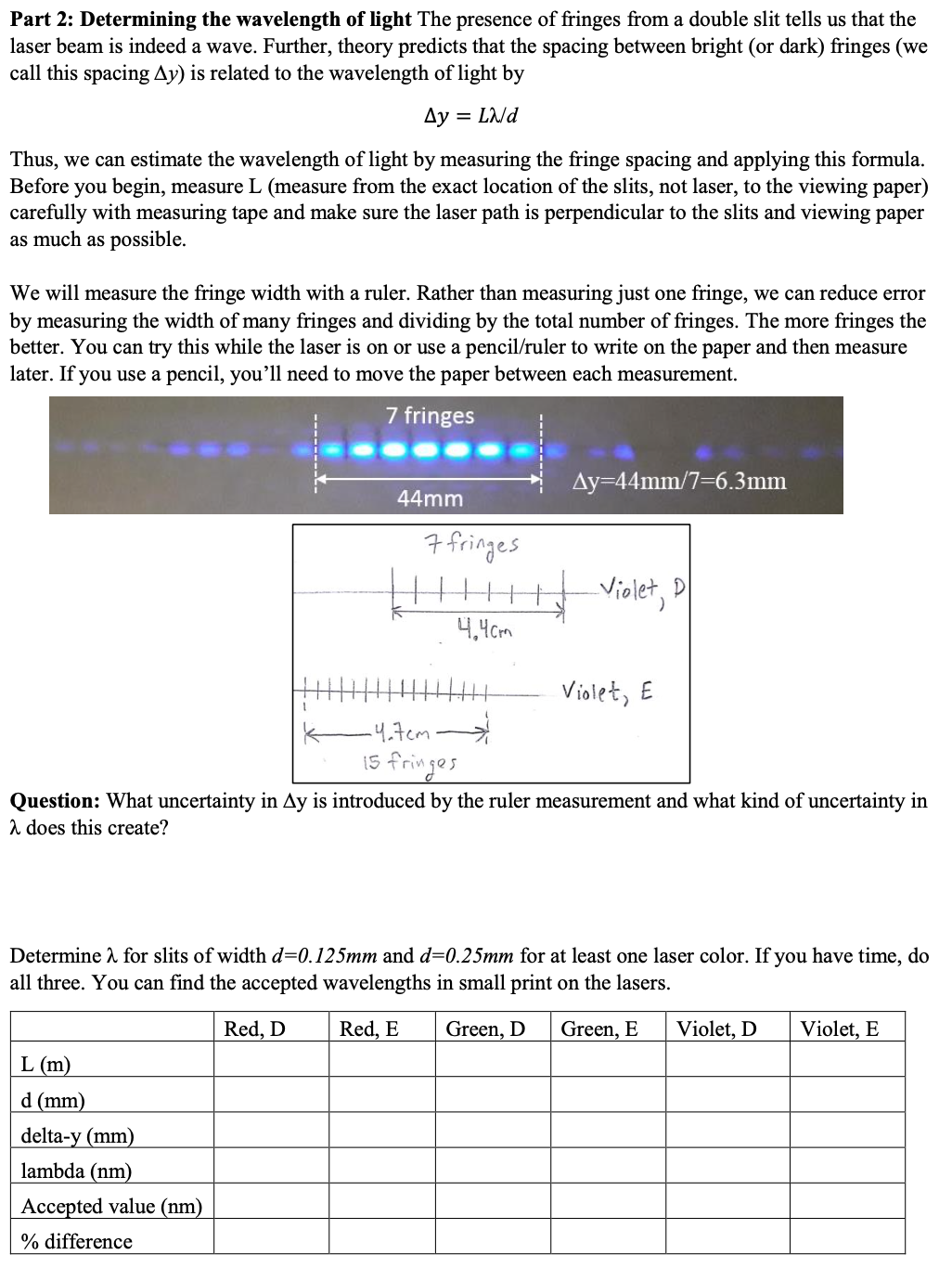Home /
Expert Answers /
Physics /
part-2-determining-the-wavelength-of-light-the-presence-of-fringes-from-a-double-slit-tells-us-tha-pa315
(Solved): Part 2: Determining the wavelength of light The presence of fringes from a double slit tells us tha ...
Part 2: Determining the wavelength of light The presence of fringes from a double slit tells us that the laser beam is indeed a wave. Further, theory predicts that the spacing between bright (or dark) fringes (we call this spacing ) is related to the wavelength of light by Thus, we can estimate the wavelength of light by measuring the fringe spacing and applying this formula. Before you begin, measure L (measure from the exact location of the slits, not laser, to the viewing paper) carefully with measuring tape and make sure the laser path is perpendicular to the slits and viewing paper as much as possible. We will measure the fringe width with a ruler. Rather than measuring just one fringe, we can reduce error by measuring the width of many fringes and dividing by the total number of fringes. The more fringes the better. You can try this while the laser is on or use a pencil/ruler to write on the paper and then measure later. If you use a pencil, you'll need to move the paper between each measurement. Question: What uncertainty in is introduced by the ruler measurement and what kind of uncertainty in does this create? Determine for slits of width and for at least one laser color. If you have time, do all three. You can find the accepted wavelengths in small print on the lasers.
Expert Answer
The accuracy of the ruler determines how much uncertainty in y the ruler measurement introduces. The measurement error for the fringe spacing might be as much as 0.5 mm (half of the smallest division on the ruler), assuming a standard ruler with millimetre marks. One may use a more accurate measurement device, such a digital calliper or a microscope with a calibrated reticle, to lessen this uncertainty.Error propagation can be used to estimate the uncertainty in that results from the uncertainty in y. If the uncertainty in that results from the uncertainty in y. the partial derivative of with regard to y is (/y). Derivative of the equation y=L/d results in:
